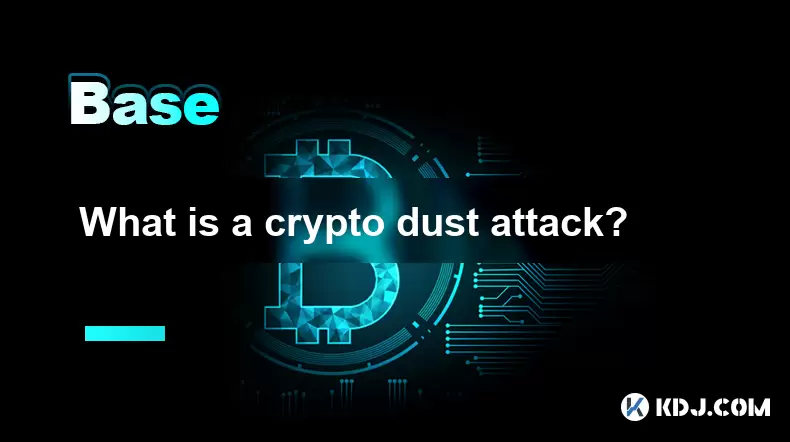-
 Bitcoin
Bitcoin $108,250.0992
0.11% -
 Ethereum
Ethereum $2,515.9404
0.03% -
 Tether USDt
Tether USDt $1.0003
0.00% -
 XRP
XRP $2.2166
-0.19% -
 BNB
BNB $656.5904
0.29% -
 Solana
Solana $147.4122
-0.58% -
 USDC
USDC $1.0000
-0.01% -
 TRON
TRON $0.2830
0.06% -
 Dogecoin
Dogecoin $0.1641
0.27% -
 Cardano
Cardano $0.5739
-0.19% -
 Hyperliquid
Hyperliquid $39.1463
-0.11% -
 Sui
Sui $2.8882
-0.02% -
 Bitcoin Cash
Bitcoin Cash $487.6428
0.31% -
 Chainlink
Chainlink $13.2097
0.07% -
 UNUS SED LEO
UNUS SED LEO $9.0308
0.10% -
 Avalanche
Avalanche $17.8608
0.13% -
 Stellar
Stellar $0.2379
-0.06% -
 Toncoin
Toncoin $2.7400
-0.39% -
 Shiba Inu
Shiba Inu $0.0...01144
-0.36% -
 Litecoin
Litecoin $87.5467
0.66% -
 Hedera
Hedera $0.1538
0.22% -
 Monero
Monero $315.5479
0.36% -
 Dai
Dai $1.0000
0.00% -
 Polkadot
Polkadot $3.3523
-0.71% -
 Ethena USDe
Ethena USDe $1.0003
0.01% -
 Bitget Token
Bitget Token $4.3960
-1.03% -
 Uniswap
Uniswap $7.2663
4.19% -
 Aave
Aave $272.8619
2.04% -
 Pepe
Pepe $0.0...09676
-0.18% -
 Pi
Pi $0.4586
-2.87%
What is a crypto dust attack?
A crypto dust attack involves sending tiny, traceable amounts of cryptocurrency to multiple wallets to track user behavior and compromise privacy by linking addresses to individuals.
Jul 06, 2025 at 04:56 am

Understanding the Basics of Crypto Dust
In the world of cryptocurrencies, "dust" refers to minuscule amounts of cryptocurrency that are often too small to be spent due to transaction fees. These tiny balances can appear in wallets from previous transactions or leftover change. While they may seem harmless, dust can be exploited in what's known as a "dust attack."
A crypto dust attack involves sending traceable amounts of cryptocurrency (dust) to multiple wallet addresses with the intent of tracking and analyzing user behavior. The goal is typically to compromise privacy by linking different wallet addresses to a single entity or individual.
How Do Dust Attacks Work?
Dust attacks leverage blockchain analysis tools to monitor how users interact with received dust. Attackers send very small amounts of crypto—often less than the minimum transaction fee—to thousands or even millions of wallet addresses. When recipients unknowingly spend this dust along with other funds, it creates a traceable link between previously unrelated addresses.
This process allows attackers to build a transaction graph, mapping out which addresses belong to the same owner. This information can be used for various purposes, including targeted phishing attempts, deanonymization, or even surveillance by malicious entities.
- Sending micro-transactions to a large number of wallets
- Monitoring subsequent transactions involving those micro-amounts
- Using analytics tools to identify address ownership patterns
Who Conducts Dust Attacks and Why?
Dust attacks are usually orchestrated by blockchain analytics firms, cybercriminals, or state-sponsored actors. Some companies use these tactics to gather data on wallet holders for compliance or market research purposes. Meanwhile, hackers might deploy dust attacks to identify high-value targets or de-anonymize users on decentralized platforms.
The primary motivation behind such attacks includes:
- Privacy invasion: Linking wallet addresses to real-world identities
- Targeted scams: Identifying wealthy wallet owners for phishing or fraud
- Surveillance: Monitoring financial activity for regulatory or intelligence reasons
These attacks highlight the vulnerability of public blockchains where all transactions are transparent and permanent.
Recognizing Dust in Your Wallet
Most modern cryptocurrency wallets do not display dust because it's uneconomical to spend. However, some wallets may show small balances or unconfirmed transactions that could indicate an attempted dust attack. Users should pay attention to unexpected incoming transactions, especially those below the network's dust threshold.
To check if you've been targeted:
- Look for unusually small incoming transactions
- Verify if your wallet software alerts you about dust
- Use blockchain explorers to inspect recent transaction history
Some wallets offer settings to automatically ignore dust, reducing the risk of unintentional linkage.
Protecting Yourself Against Dust Attacks
Preventing dust attacks requires a combination of technical awareness and careful wallet management. One effective strategy is to avoid mixing dust with regular transactions. If you receive unrequested micro-transfers, it's best to leave them untouched or isolate them in a separate wallet.
Here are actionable steps to mitigate dust attack risks:
- Use wallet services that filter or warn about dust
- Avoid spending dust without understanding its origin
- Maintain multiple wallets for different purposes
- Utilize privacy-focused cryptocurrencies like Monero or Zcash when anonymity is critical
Additionally, employing coin control features in advanced wallets allows users to manually select which coins to spend, preventing inadvertent mixing with suspicious inputs.
Frequently Asked Questions About Dust Attacks
Q: Can dust attacks steal my cryptocurrency?
No, dust attacks themselves cannot steal funds. They aim to track wallet usage and potentially expose identity or transaction patterns rather than directly accessing assets.
Q: Are dust attacks illegal?
While not explicitly illegal in most jurisdictions, dust attacks raise ethical concerns regarding privacy violations. Their legality depends on local regulations surrounding data collection and digital asset usage.
Q: How do I remove dust from my wallet?
You can either leave the dust untouched or consolidate it into a new wallet address using advanced wallet features. Some wallets allow users to sweep dust into a dedicated output to prevent accidental linkage.
Q: Do all cryptocurrencies experience dust attacks?
Not all, but popular ones like Bitcoin and Ethereum are common targets due to their widespread adoption and transparent blockchain structures. Privacy-focused coins implement mechanisms to resist such tracking techniques.
Disclaimer:info@kdj.com
The information provided is not trading advice. kdj.com does not assume any responsibility for any investments made based on the information provided in this article. Cryptocurrencies are highly volatile and it is highly recommended that you invest with caution after thorough research!
If you believe that the content used on this website infringes your copyright, please contact us immediately (info@kdj.com) and we will delete it promptly.
- Litecoin Breakout Watch: What Traders Need to Know Now
- 2025-07-06 16:50:13
- Bitcoin, Solana, Ethereum: Decoding the Latest Buzz on the Blockchain
- 2025-07-06 16:50:13
- Widnes Resident's 50p Could Be Your Ticket to Easy Street: Rare Coin Mania!
- 2025-07-06 16:55:13
- Bitcoin, Solaris Presale, and Token Rewards: What's the Buzz?
- 2025-07-06 16:55:13
- Ethereum Under Pressure: Price Drop Amid Global Uncertainties
- 2025-07-06 17:00:13
- XRP, SEC Case, and Prosperity: A New Era for XRP Holders?
- 2025-07-06 17:10:13
Related knowledge

What is a user-generated content (UGC) NFT platform?
Jul 04,2025 at 01:49pm
Understanding the Concept of a UGC NFT PlatformA user-generated content (UGC) NFT platform is a digital marketplace or ecosystem where users can create, mint, and trade non-fungible tokens (NFTs) that represent ownership of original digital content they produce. Unlike traditional NFT platforms where creators often include professional artists or develo...

What is composability in DeFi?
Jul 06,2025 at 04:07pm
Understanding the Concept of Composability in DeFiComposability in DeFi refers to the ability of decentralized finance protocols and smart contracts to interact seamlessly with one another, much like building blocks that can be combined in various ways to create new financial products and services. This concept is a core innovation within the DeFi ecosy...

What is a "crypto primitive"?
Jul 05,2025 at 10:14pm
Defining the Concept of a Crypto PrimitiveIn the context of blockchain and cryptocurrency, a crypto primitive refers to a fundamental building block or foundational element used in constructing decentralized systems and cryptographic protocols. These primitives are essential for enabling secure transactions, consensus mechanisms, and smart contract exec...

What is a fair launch?
Jul 05,2025 at 07:31pm
Understanding the Concept of a Fair LaunchA fair launch refers to the release of a cryptocurrency or blockchain project in a manner that ensures equal opportunity for all participants. Unlike traditional token launches, which may involve private sales, venture capital funding, or pre-mining, a fair launch emphasizes transparency and decentralization. In...

What is a cliff in tokenomics?
Jul 05,2025 at 07:18pm
Understanding the Concept of a Cliff in TokenomicsIn the world of cryptocurrency and blockchain, tokenomics plays a pivotal role in shaping the economic behavior of a digital asset. One of the key mechanisms used to manage token distribution is known as a cliff. This concept is commonly applied in projects that include vesting schedules for tokens, espe...

What is a token generation event (TGE)?
Jul 04,2025 at 07:14am
Understanding the Basics of a Token Generation Event (TGE)A Token Generation Event (TGE) refers to the process through which a blockchain project creates and distributes its native tokens to investors, participants, or stakeholders. This event is often associated with new cryptocurrency projects launching on platforms like Ethereum, Binance Smart Chain,...

What is a user-generated content (UGC) NFT platform?
Jul 04,2025 at 01:49pm
Understanding the Concept of a UGC NFT PlatformA user-generated content (UGC) NFT platform is a digital marketplace or ecosystem where users can create, mint, and trade non-fungible tokens (NFTs) that represent ownership of original digital content they produce. Unlike traditional NFT platforms where creators often include professional artists or develo...

What is composability in DeFi?
Jul 06,2025 at 04:07pm
Understanding the Concept of Composability in DeFiComposability in DeFi refers to the ability of decentralized finance protocols and smart contracts to interact seamlessly with one another, much like building blocks that can be combined in various ways to create new financial products and services. This concept is a core innovation within the DeFi ecosy...

What is a "crypto primitive"?
Jul 05,2025 at 10:14pm
Defining the Concept of a Crypto PrimitiveIn the context of blockchain and cryptocurrency, a crypto primitive refers to a fundamental building block or foundational element used in constructing decentralized systems and cryptographic protocols. These primitives are essential for enabling secure transactions, consensus mechanisms, and smart contract exec...

What is a fair launch?
Jul 05,2025 at 07:31pm
Understanding the Concept of a Fair LaunchA fair launch refers to the release of a cryptocurrency or blockchain project in a manner that ensures equal opportunity for all participants. Unlike traditional token launches, which may involve private sales, venture capital funding, or pre-mining, a fair launch emphasizes transparency and decentralization. In...

What is a cliff in tokenomics?
Jul 05,2025 at 07:18pm
Understanding the Concept of a Cliff in TokenomicsIn the world of cryptocurrency and blockchain, tokenomics plays a pivotal role in shaping the economic behavior of a digital asset. One of the key mechanisms used to manage token distribution is known as a cliff. This concept is commonly applied in projects that include vesting schedules for tokens, espe...

What is a token generation event (TGE)?
Jul 04,2025 at 07:14am
Understanding the Basics of a Token Generation Event (TGE)A Token Generation Event (TGE) refers to the process through which a blockchain project creates and distributes its native tokens to investors, participants, or stakeholders. This event is often associated with new cryptocurrency projects launching on platforms like Ethereum, Binance Smart Chain,...
See all articles

























































































